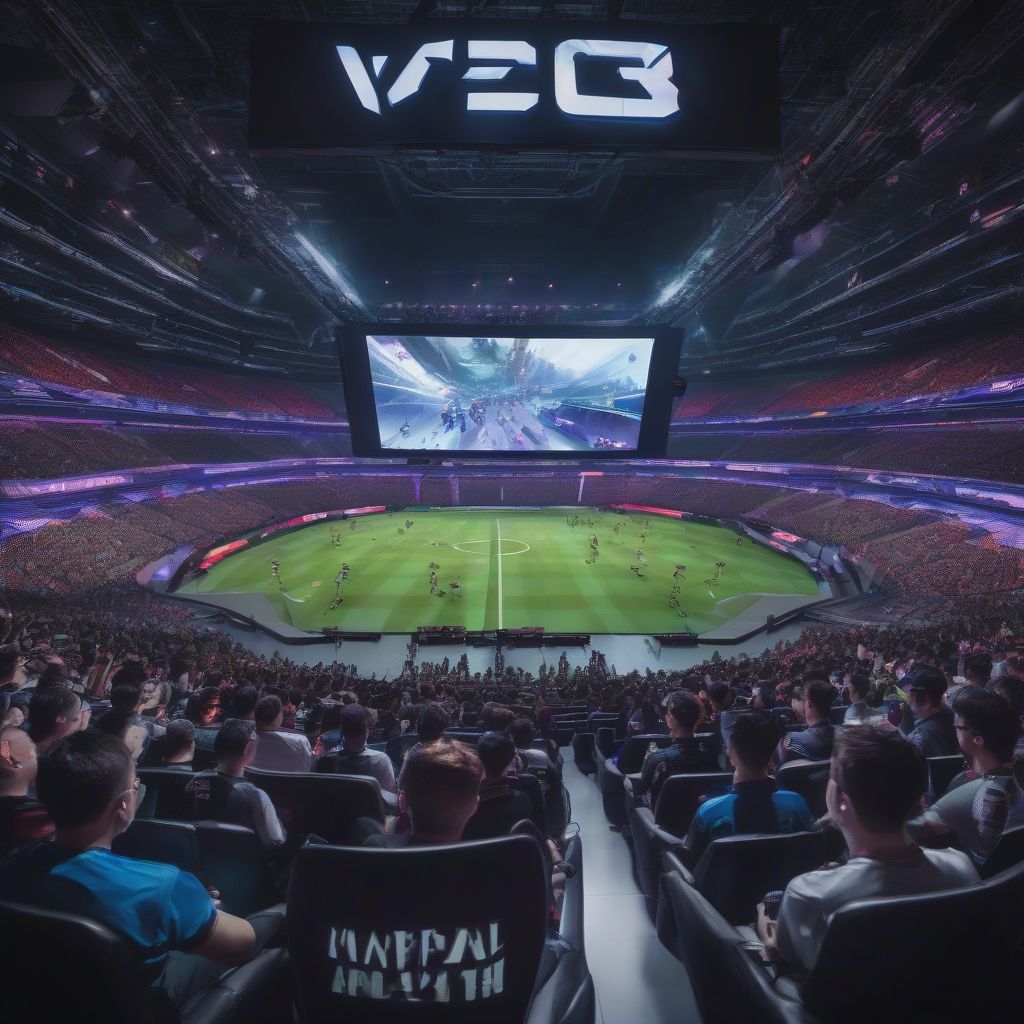Imagine stepping into the shoes of your favorite eSports athlete, the roar of the virtual crowd washing over you as you prepare for a match. This is the immersive promise of virtual reality (VR) in eSports, a technology poised to revolutionize competitive gaming as we know it. But how exactly is VR impacting the eSports landscape, and what does the future hold? Let’s dive in.
Leveling the Playing Field: How VR Creates a More Immersive Experience
One of the most significant contributions of VR to eSports is the heightened sense of immersion. By transporting players directly into the game world, VR eliminates the disconnect of a traditional screen and mouse setup. This creates a more visceral and engaging experience for both players and spectators alike.
Enhanced Presence and Strategy:
- 360-Degree View: VR headsets provide a full 360-degree view of the game environment, allowing players to perceive threats and opportunities from all angles. This fosters more strategic gameplay and quicker reaction times.
- Motion Tracking: VR integrates motion tracking technology, enabling players to control their in-game movements with their actual body. This adds a physical dimension to virtual competition, demanding enhanced coordination and reflexes.
Blurring the Lines Between Real and Virtual:
- Realistic Graphics and Sound: Advanced VR headsets offer stunning visual fidelity and spatial audio, creating an incredibly realistic and captivating experience. This blurs the lines between the real and virtual worlds, drawing players and audiences deeper into the competition.
- Haptic Feedback: Some VR systems incorporate haptic feedback, allowing players to “feel” the impact of in-game events. This adds another layer of realism, making the gaming experience even more immersive.
From Spectator to Participant: VR’s Impact on eSports Viewership
VR isn’t just changing how eSports athletes compete; it’s also transforming how fans experience the action. Imagine watching a match from the perspective of a player or even a virtual coach on the sidelines. VR opens up exciting new possibilities for spectator engagement.
Next-Level Viewing Experiences:
- Virtual Arenas: VR can transport viewers to virtual arenas, allowing them to experience the electric atmosphere of live eSports events from the comfort of their homes.
- Interactive Viewing: Some VR platforms offer interactive viewing experiences, letting viewers control camera angles, access player stats in real-time, and even interact with other spectators in virtual spaces.
 VR eSports Tournament
VR eSports Tournament
Building Community Through VR:
- Social VR Experiences: VR fosters a sense of community by allowing fans to connect with each other in virtual spaces, sharing their passion for eSports and discussing the latest matches.
- Virtual Meet-and-Greets: VR can facilitate virtual meet-and-greets with professional players, giving fans unprecedented access to their idols.
Overcoming the Challenges: VR’s Path to eSports Domination
While the potential of VR in eSports is undeniable, several challenges need to be addressed before it becomes the industry standard.
Technical Hurdles:
- High Hardware Requirements: VR headsets and powerful gaming PCs remain expensive, limiting widespread adoption.
- Technical Glitches: As with any emerging technology, VR is still prone to occasional technical glitches that can disrupt gameplay and detract from the experience.
Gameplay Considerations:
- Motion Sickness: Some users experience motion sickness when using VR headsets, which can be a barrier to entry for some players.
- Physical Demands: Extended VR gaming sessions can be physically demanding, requiring players to be in good physical condition.
The Future of VR in eSports: A World of Possibilities
Despite these challenges, the future of VR in eSports is incredibly bright. As technology advances and becomes more accessible, we can expect to see VR’s influence on competitive gaming grow exponentially.
The Rise of VR-Native eSports:
- New Genres and Games: Developers are creating innovative games specifically designed for VR, pushing the boundaries of competitive gaming.
- Dedicated VR Leagues and Tournaments: The emergence of VR-exclusive eSports leagues and tournaments is on the horizon, offering new opportunities for professional gamers.
VR as a Training Tool:
- Enhanced Training Regimens: eSports teams are exploring VR as a training tool, using simulations to improve players’ reaction times, strategic thinking, and teamwork.
- Accessible Practice Environments: VR can provide accessible and realistic practice environments for aspiring eSports athletes, helping them hone their skills.
The Final Level: Embracing the VR Revolution
The integration of VR into eSports is still in its early stages, but its potential is undeniable. From creating immersive gaming experiences to transforming how we watch and engage with competitive gaming, VR is poised to revolutionize the eSports landscape. As technology continues to evolve and become more accessible, the line between virtual competition and reality will continue to blur, ushering in a new era of immersive and exhilarating eSports action.
[amazon bestseller=”virtual reality headset”]
Are you excited about the future of VR in eSports? Share your thoughts and predictions in the comments below!
